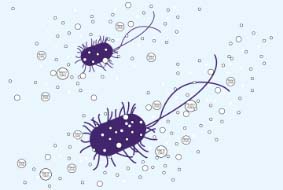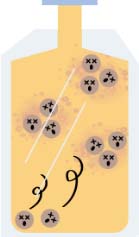The usefulness of intestinal flora transplants and their history in Japan and abroad
Intestinal flora transplants are currently being studied at various institutions in Japan and abroad, and a certain level of efficacy has been recognized in the treatment of ulcerative colitis and irritable bowel syndrome. However, in Japan the transplants are not yet covered by the Clinical Research Act. So the final evaluation has not yet been made and the patient must pay the full amount of the transplant.
The following is a summary of the history of the usefulness of intestinal flora transplants in Japan and abroad to date. New information will be posted on this site’s blog as it becomes available.
The earliest intestinal flora transplant is said to have been performed around the 4th century in China when a person suffering from diarrhea that would not stop was cured by placing stool from a healthy person in his buttocks. Since then, research on fecal microbiota transplantation has progressed in Western countries, starting with a report on pseudomembranous enteritis in 1958.
Intestinal flora transplants reentered the spotlight in 2013 when a Dutch study showed that it was effective in treating Clostridioides difficile infection (CDI), a disease caused by the use of large amounts of antibiotics in surgical procedures. This disease causes a loss of diversity in the intestinal microflora, which should normally contain thousands of species, and in the worst case scenario the disease can be fatal. In the United States, more than 500,000 people are affected by this disease every year, and 30,000 people die each year.
The following year, in 2014, the U.S. Food and Drug Administration (FDA) positioned “intestinal flora transplants as the treatment of first choice in cases of multidrug resistance in CDI.” Its effectiveness is currently being medically proven.
On the other hand, in 2019, the FDA issued a warning that “intestinal flora transplants may pose a serious risk of infection” in cases where lethal bacteria were transplanted without proper screening at the time of transplantation and may result in death.
As of 2021, intestinal flora transplants exist under the FDA’s executive discretion policy and can be used to treat CDI. However, it is difficult to obtain the benefits of this new treatment without the provision of a reliable bacterial solution and the selection of a specialized hospital that can provide accountability.
Research on fecal microbiota transplantation in Japan began in 2013 at eight university hospitals and other facilities around the country, with clinical trials focusing on ulcerative colitis and Crohn’s disease (the first phase was completed in 2016). The effects on inflammatory bowel disease are being reported in turn.
A list of clinics in Japan that have the knowledge, optimal screening, and superior medical technology to treat the disease can be found here.
TRENDS IN CLINICAL TRIALS AND CLINICAL STUDIES OF FMT (JAPAN)
National Institute of Health Sciences, Clinical Research Information Portal Site, all 28, 2022.09.09)
| Disease |
Number of cases |
Research institution |
| Ulcerative Colitis |
9 |
Juntendo University, Fujita Health University, Keio University, Shiga Medical University |
| rCDI |
7 |
Shiga University of Medical Science, Osaka City University,
Fujita Health University, Nagoya University |
| Crohn’s disease |
4 |
Fujita Health University, Shiga University of Medical Science, Keio University |
| After allogeneic hematopoietic stem cell transplant |
3 |
Shiga University of Medical Science (Cancer, Infectious Disease Center),
Komagome Metropolitan Hospital |
Immune Checkpoint
Inhibitor Therapy |
9 |
Fujita Health University |
| Other |
4 |
Kanazawa University |
*2014-2021
*Completed: 5 UC, 1 rCDI
*Discontinued : 3 rCDI clinical studies
*Number of cases: 10, 20, 30, 50, 60, less than 30
The NanoGAS®-FMT method reports all adverse events.
Adverse Event Reporting
Safety system details:
Japanbiome affiliated with Symbiosis Inc.















